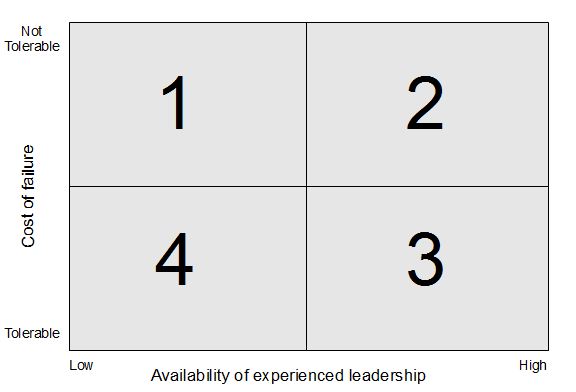Leadership

QoTD
A Model Relating Experience And Leadership
Udayakumar Nalinasekaren
Dec 21, 2010
 We definitely understand the inspiring leadership demonstrated by people like young Bill Gates and many young sports people. Young people can lead and produce awesome results.
We definitely understand the inspiring leadership demonstrated by people like young Bill Gates and many young sports people. Young people can lead and produce awesome results.
We saw seven important aspects of leadership in the previous post. They are namely
- Have a vision
- Identify the risks of change towards achieving the vision
- Have the boldness to execute actions
- Communicate the vision effectively
- Bring the right resources to the actioning environment and aligning them in the desired direction
- Track progress
- Recognize and Reward progress
The question at the end was, which one of these are more important and rely on the experience of the leader for results.
If you think about this deeply, there are two key, fundamental and common leadership aspects to all leadership environments. They are dreaming (developing a vision), and having the resolve/ boldness to execute actions to realize dream. Everything else subordinates under these two aspects. You would have noticed that these are skills exhibited by all small children intutively and sponteneously. From crawling to standing up, each one of them demonstrate these skills so well and eventually succeed. Even where stimulus is insufficient, they bring themselves to realize their vision despite the pain and the rigor in the process. Only the lead time they take for achievement differs from case to case. However, as we grow up, we lose some of these skills on the way up as we get to know about fear and allow it immobilize us. Success is a medicine that helps overcome fear and motivates people to experiment.
The key question now is to find out how experience and leadership are related. What is described here may not be a scientific way to finding the right answer. Nevertheless it is a practitioner's bold attempt.
Let us switch focus to a real life situation. Assume that an open heart surgery has to be performed. We have a choice of two surgeons. One is just fresh out of school and has been properly trained to lead the surgery. The other is someone who has performed hundred successful open heart surgeries. If the patient is your next of kin, who will you prefer?
There you go! There is some relationship between leadership and experience. I will try explain it using two continuum namely cost of failure and availability of experienced leadership.

While experience may not be required to lead, wherever there is a high cost of failure, the world will prefer an experienced leader if one is available. In zone 1, think of venture capitalists who bet on 10 new ideas hoping two of them will have spectacular success. Therefore while cost of failure is significant, it is typically a conscious bet on inexperienced leaders. Also think of a crisis situation where the system does not have a choice of an experienced leader. Zone 1 is also a zone where the fear factor is the maximum. Zone 1 opportunties are for aspiring young leaders to watch out for like a hawk and grab. Getting an opportunity and succeeding in zone 1 is a jackpot for a young leader. Zones 3 and 4 are playing fields for young turks. In zone 2, a very bold godfather/godmother is required for a young leader to get an opportunity to play.
Let me know if this makes sense to you.
My Artwork
Coming soon...Latest Blog Posts
Coming Soon
Archives
Search



